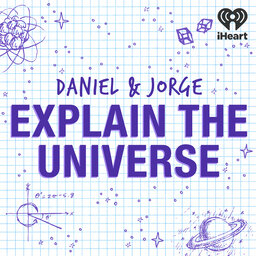Are there stars made of dark matter?
Daniel and Jorge talk about what it takes to make a star and whether dark matter could pull it off
Learn more about your ad-choices at https://www.iheartpodcastnetwork.com
See omnystudio.com/listener for privacy information.
 Daniel and Jorge Explain the Universe
Daniel and Jorge Explain the Universe


